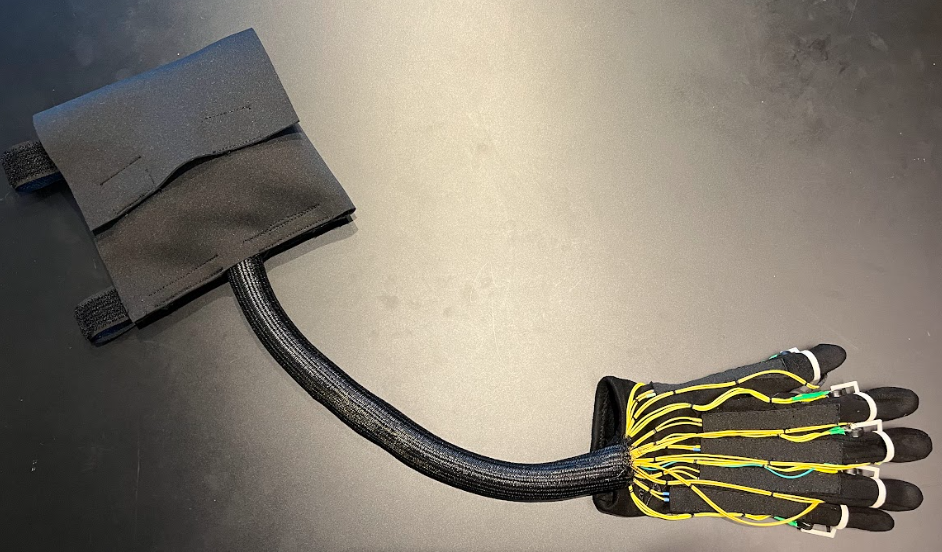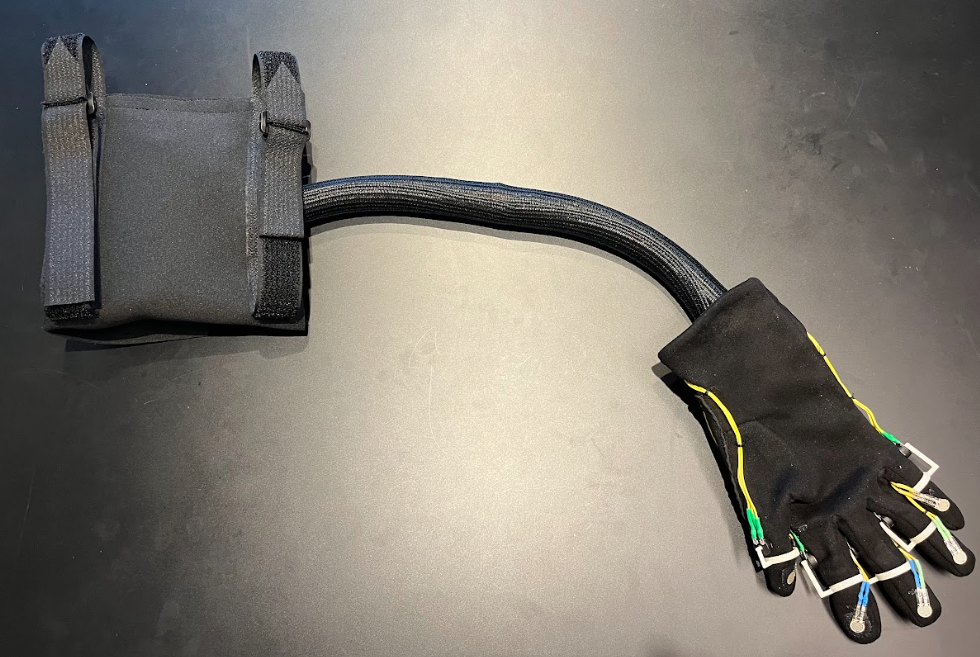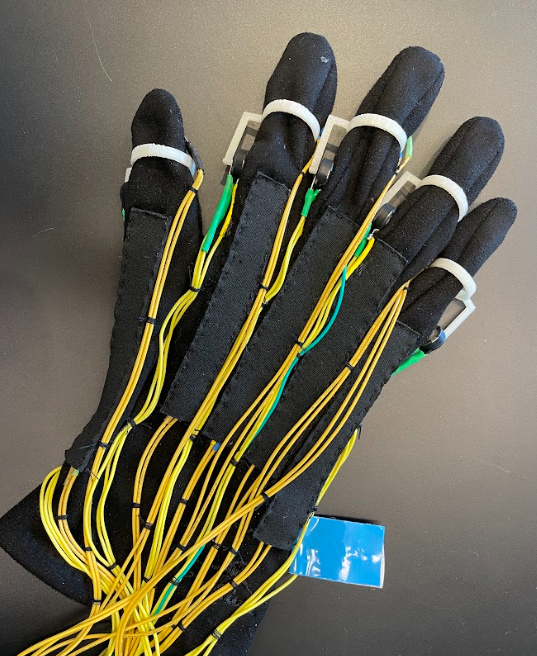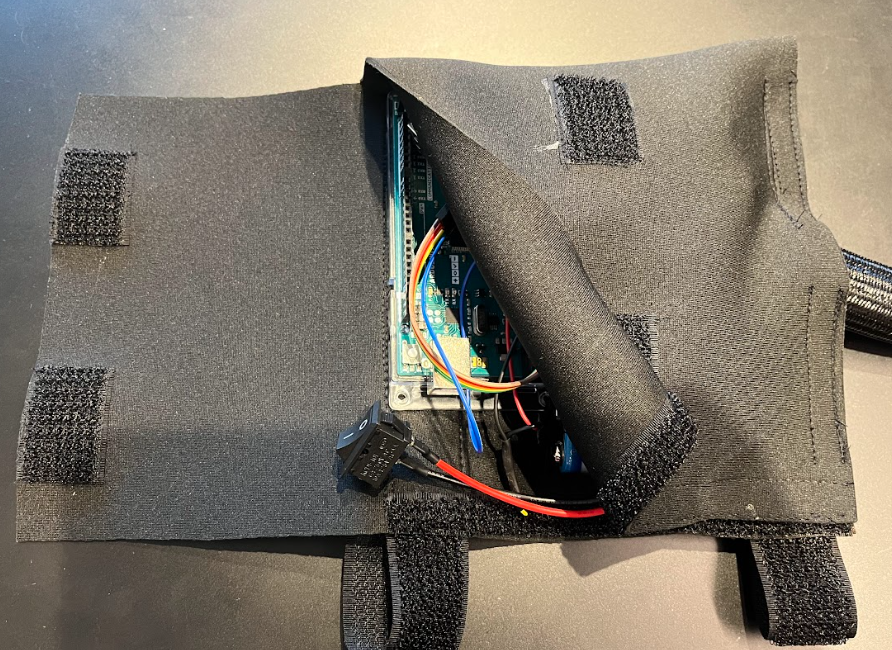Proposed Solution:
- Incorporates fingertip force and ROM sensors
- Tracks progression of hand function to quantify the benefit of rehabilitative exercise
- Exportation of recorded data to be analyzed by clinicians
This project will work to record hand function progression in various exercises in patients demonstrating stroke-related hand impairment through offering a device that is capable of calculating and documenting strength and coordinated range of motion for rehabilitation efforts.
Design Requirements
- The device must calculate the change in grip force applied over time in one trial (effort) through the fingers on a grasped object in the hand.
- The device must be able to calculate the PIP and MCP joint angles through various hand movements.
- The device must be able to export recorded information.
- The prototype must be able to fit a standard length and width of a medium-sized human hand.
- The device must be portable.
- The device must be powered for the duration of the exercise.
- The device must meet specific electrical standards (IEC).
- The device must be able to be cleaned and disinfected.
- The device must allow for patients to comfortably grip desired objects.
- The device and software components must be user-friendly outside a clinical environment.
- The device must be able to be applied to the hand independently.
Design Solutions
Known Design Features:
- Cloth glove material that is insulating, fireproof, and waterproof
- Microprocessor for analog inputs (selected Arduino Mega)
- Force sensitive resistors
- Rotational Potentiometers
- Flex Sensors
- Velcro band on upper arm with compartment to store Arduino and battery; adjustable
- Micro SD for data exportation
Safety/Hazard Analysis:
- The device will be powered using a 9V battery and will probably use ~20 mA of current to function. In the event of electrical component exposure, the worst-case risk would be muscular paralysis (since the “let-go” current was surpassed). Extra care will be taken to ensure that the device is used properly, and that all components are well-crafted and protected. Additionally, users will be advised to not grasp objects in contact with water while using this device.
- The device may result in minor discomfort during use that is typical with muscle rehabilitation. Additionally, using a too-tight glove or overusing muscles may result in pressure marks or bruising.
- Data will be stored containing information on rehabilitation efforts. Since this data can be exported, it is up to the user to physically keep track of the device and data exports. If this device was to go into actual production, significant efforts would be made to ensure a bug-free and well-protected software.
- Storage of the Arduino Mega and the battery source will be in a velcro band with a compartment (that is also velcro-sealed). Initially, we chose for the storage compartment to be zipper closed. However, this presents a difficulty for the selected audience, who uses this device because they suffer from hand impairment. The purpose of this arm-band is to minimize interference of the microprocessor and battery, and we aim to make the cloth used to be safe for electrical components.
Final Prototype
November 2023- Above is our proposed design solution. Here, we want to showcase how we are incorporating features like potentiometers, jumper cables, power sources, and rotational potentiometers. Additionally, we have the microcontroller and power source encased in the upper arm compartment. Note that sensors will be sewn-in to the fabric and not sticking out.
February 2024- After feedback, we have made critical adjustments to the form and function of the device. First, instead of a zipper on the upper arm, we will be using velcro instead. Second, we will be incorporating flex sensors instead of linear potentiometers. The following is our current design solution:

As of May 2024, the final prototype for the GripSense device has been completed. This includes an armband for holding circuitry, a flexible tube holding the wire components, and the glove containing the attached FSRs, flex sensors, and rotational potentiometer. Additional features include a microSD port for data export and ring attachments to the glove to allow for the internal wipers in the rotational potentiometer to move.




